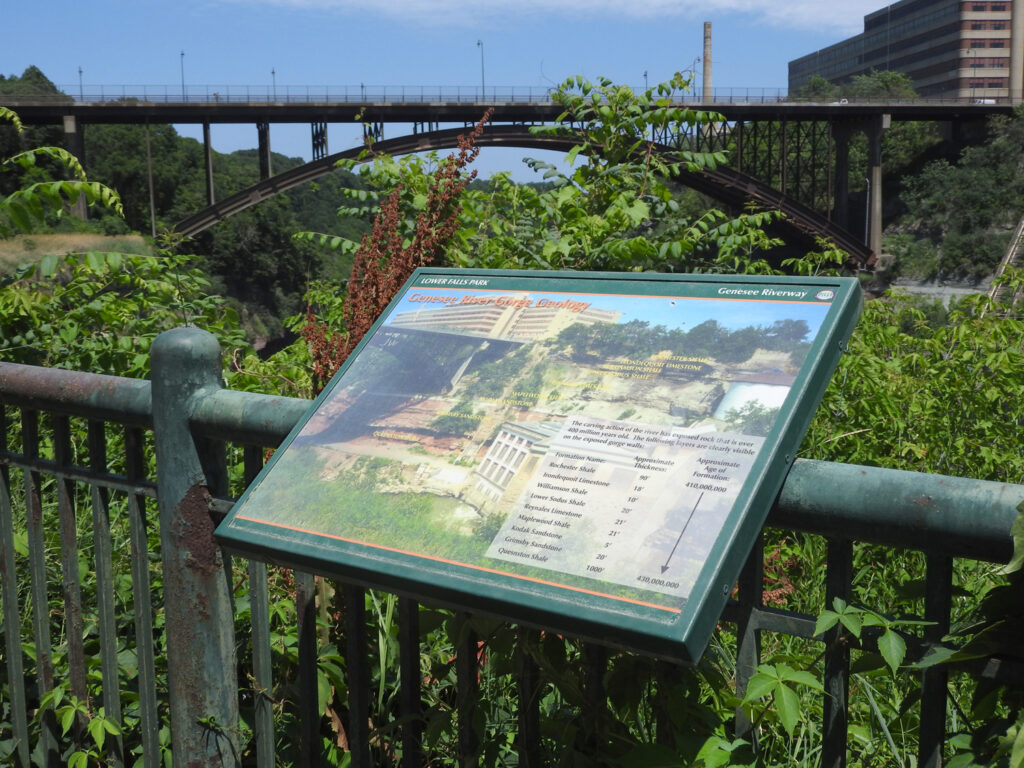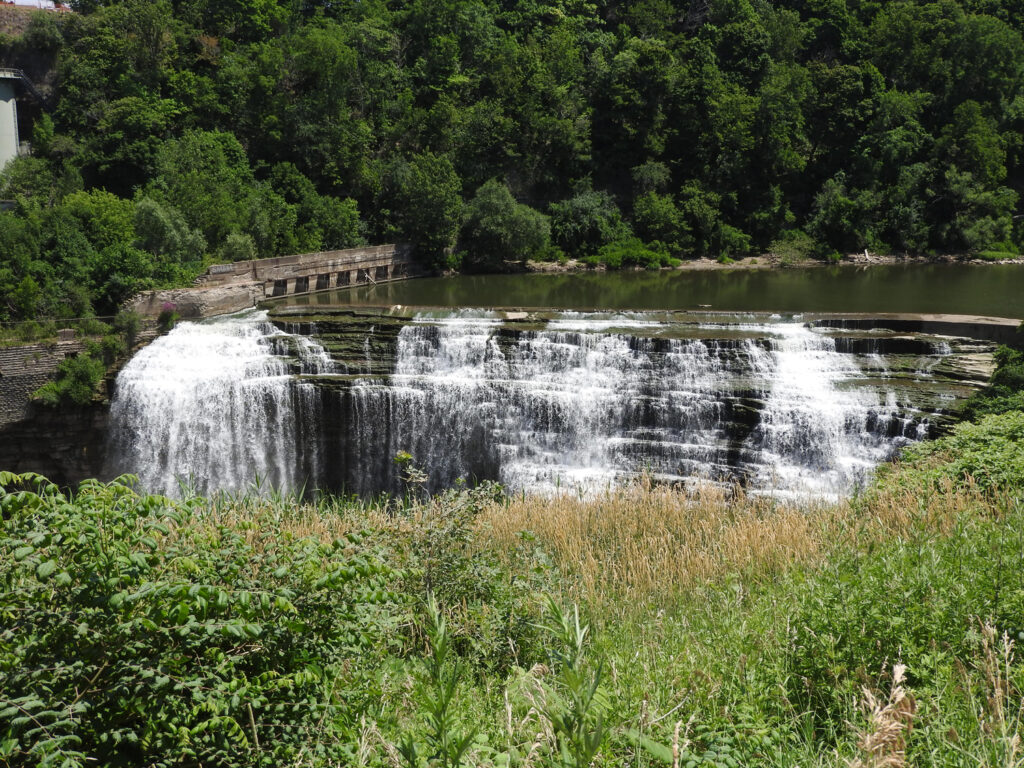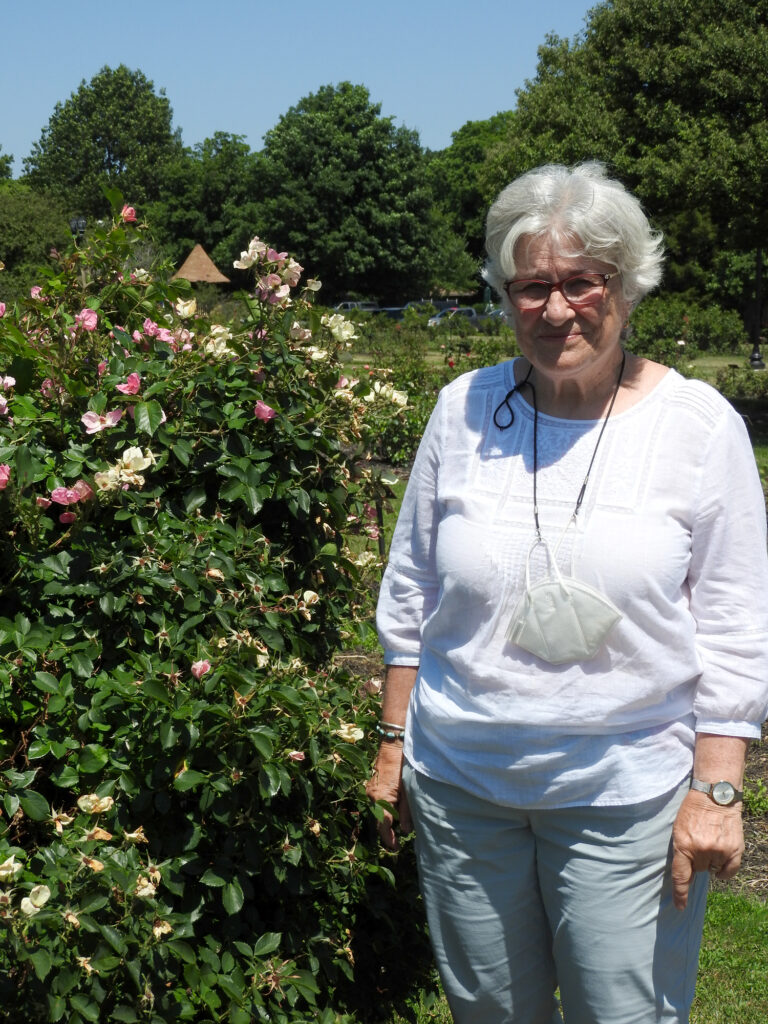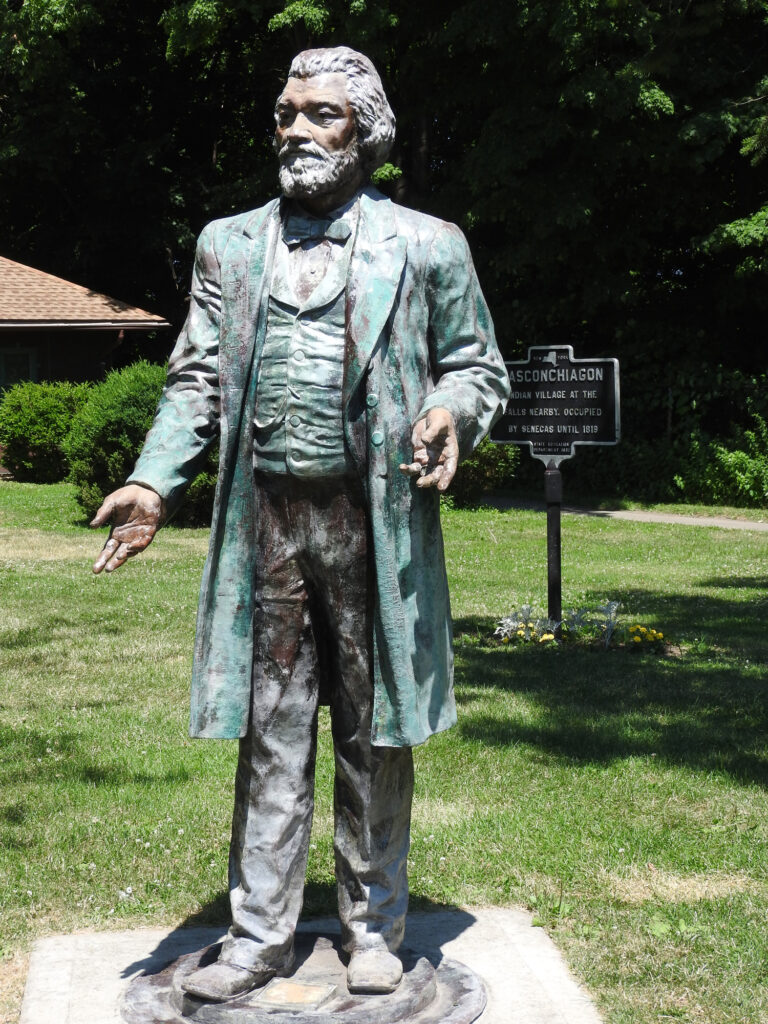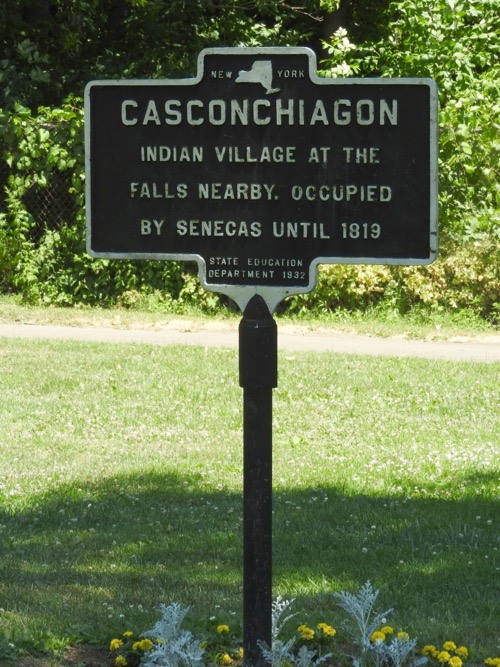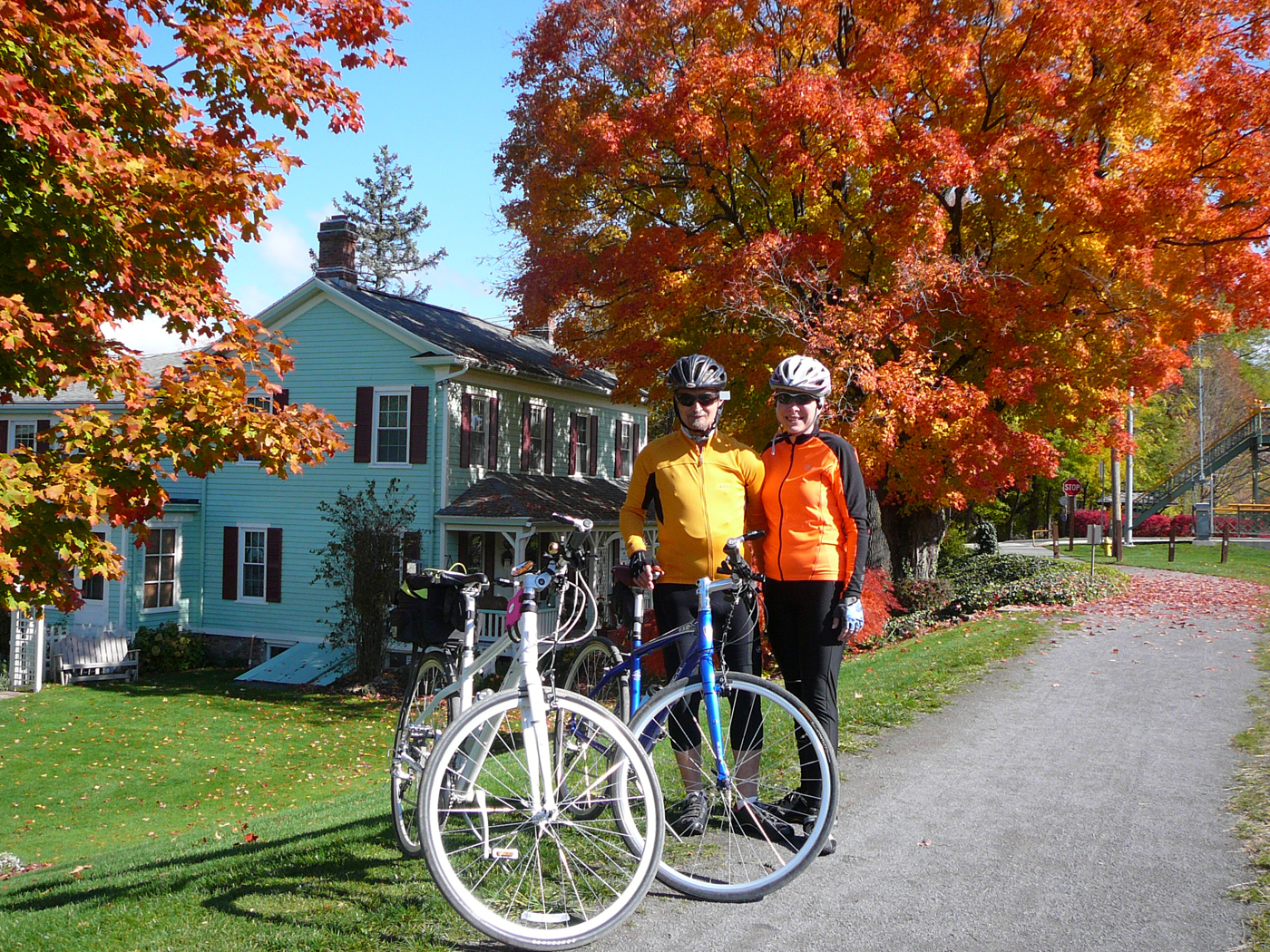Celebrating Frederick Law Olmsted’s 200th Birthday
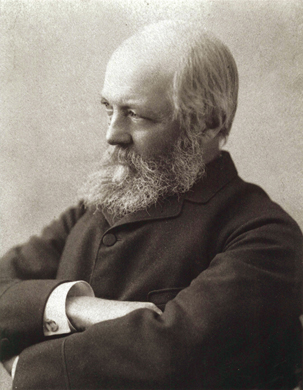
Photos by Karen Fien
Along with the Town of Greece celebrating their 200th Anniversary this year, an important figure in Rochester’s history is being celebrated. April 26, 2022, marked the 200th birthday of Frederick Law Olmsted, author, journalist, public official, city planner and father of American landscape architecture. Olmsted’s role in beautifying Rochester through planning the municipal parks system is an ongoing gift to every citizen.
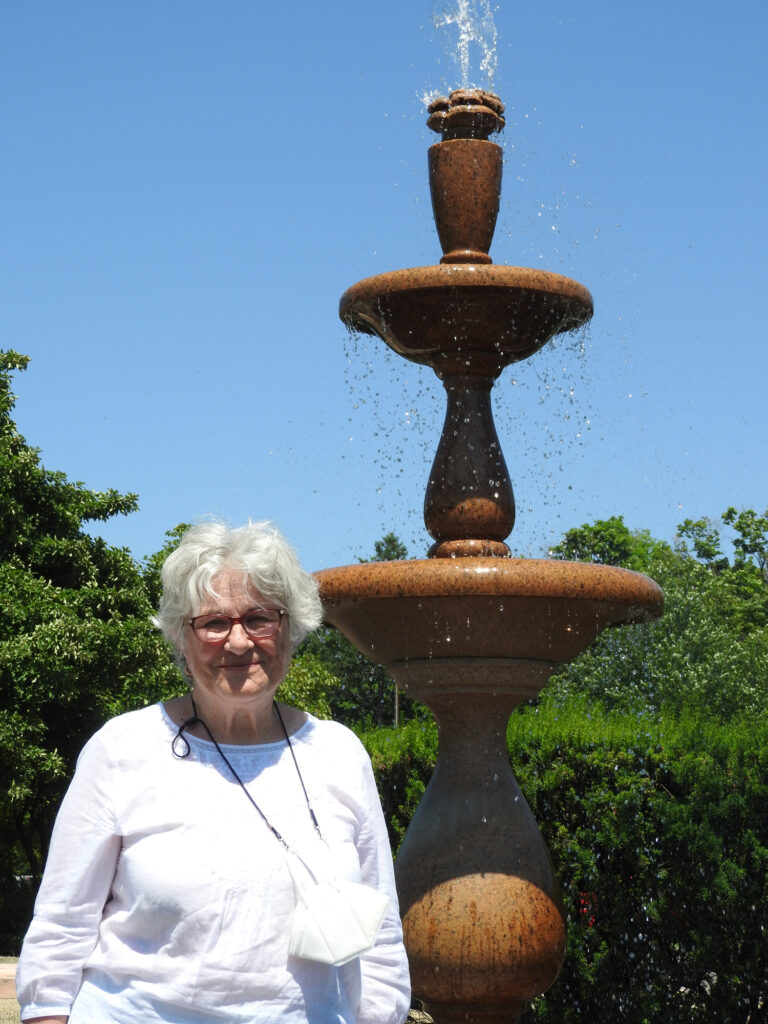
Local expert on Olmsted, JoAnn Beck, is a retired Landscape Architect, whose professional experience includes academic, private and public practice for over 35 years. Her work on projects in Olmsted Parks engendered a deep appreciation of their history and ongoing value. As the former Senior Landscape Architect at the City of Rochester, she administered the design of public projects including the Genesee Riverway Trail at Turning Point Park, El Camino Trail and others. She serves as Chair of the Olmsted Parks Alliance, on the Board of the Maplewood Neighborhood Association, and as President of the Board of Directors of The Highland Park Conservancy. Beck said, “Rochester benefited greatly from the relationship that was formed with Olmsted. Prominent Rochester citizens, George Ellwanger and Patrick Barry, developed the largest landscape nursery in the country. Both were committed citizens and advocates for parks. Towards the end of their business, they started to think about the land they owned. They donated 22 acres to serve as Rochester’s first municipal park, now Highland Park. The state parks commission accepted the donation, and the city fathers found themselves with prime nursery land and set out on a mission to develop a park for Rochester.”
The city fathers had to look no further than Buffalo, New York for inspiration. Olmsted designed a system of parks and parkways in Buffalo that was the first of its kind in the nation, and represents one of his largest bodies of work. “The planners were advised to get the very best to do the work, and to do everything that he says,” Beck said. A public request for an interview went out to Olmsted. He came to Rochester and toured around the county looking at the natural landscape and resources. Olmsted gave an oral presentation to the committee. Olmsted’s advice to the committee was to not just think about a 22 acre park, but to think about a larger park system. He proposed that the city acquire scenic lands, those that are most expressive about what is unique to the landscape of Rochester.
Olmsted was always characterized by a sort of scale/scope way of thinking about a park system as a whole, which includes the power of scenery. Olmsted preferred the education that his travels and personal experiences garnered. A year long voyage in the China Trade, farming, writing for the New York Daily Times, and a six month walking tour that was life-changing all contributed to his education. He visited Liverpool’s Birkenhead Park, in England, a rare public park open to all. After visiting the public park Olmsted concluded that park access should be a right of all Americans. He wrote, “I was ready to admit that in democratic America there was nothing to be thought of as comparable to this People’s Garden.”
Beck said Olmsted was also extremely moved by his tour of the southern United States before the Civil War. “Olmsted’s travels in the south, where he experienced slavery as an economic system, formed his beliefs that inequality and slavery are morally wrong. His experiences during the Civil War are where he saw carnage up close. These observations influenced his design concepts as to how a free society should function with everyone included in the equation. He was totally committed to public improvement and believed the idea of going physically into beautiful spaces improved the well-being of all.”
Beck goes on to say that during our recent pandemic the Olmsted parks were used exactly how they were meant to be used, large, very spacious and safe, an outdoor public space where people can easily social distance. Parks were built for physical and mental health, free and accessible to everyone. During Olmsted’s time, childhood mortality was high, and affected everyone, without consideration to social status. Fresh air and sunshine are what was used as medicine. Olmsted was an advocate for health practices including exercise and good nutrition.
Rochester’s Olmsted parks are Highland Park, Genesee Valley Park, Seneca Park and Maplewood Park. Over the next several issues, Greece News will look at each of the Olmsted designed parks. First is the Maplewood Park and Rose Garden which borders Greece.
Maplewood Park and Rose Garden (Seneca Park West)
Maplewood Park and Seneca Park were designed to cover both sides of the Genesee River, lining the riverside with trails and walking access to the river level. Maplewood Park, built in 1888, is located on the left bank of the river. A narrow band at the top of the gorge when built, the park was an immediate success, the people loved it, and looked for opportunities to experience it. A section, the Rose Garden and Maple Grove area, was presented to the city by Walter B. Duffy and George Eastman.
Maplewood Park was designed as a showcase for the nature specific to this area. It was beautifully naturalized with cascades, the sheer cliffs of the gorge, wetlands and the native forest dominated by groves of Hickory, Beech, Hemlock and American Chestnut trees. Over the years, ecology has changed the vegetation, but the experience of the original design can still be felt, and the view of the gorge from the Driving Park Bridge is wonderful.
One of the highlights for JoAnn Beck, when in Maplewood Park, is visiting the statue of American social reformer and statesman Frederick Douglass. Located in the Maple Grove, the statue marks the spot where Douglass went to the river’s edge to catch a riverboat to Canada. Beck said, “Douglass was notified that Federal Marshals were in Rochester to arrest him on charges that he was part of a conspiracy. He escaped, and later moved on to England. It is very special to me when I stand in that place and think about what happened right where I am standing.”
Maplewood Park runs alongside two miles of Lake Avenue. With scenic views of two waterfalls and the Genesee River Gorge, it is a favored place for weddings and photographs. The Genesee Riverway Trail, a National Recreation Trail, winds through the park. There is a pond for fishing, tennis courts and walking paths. The Lower Falls Overlook area contains the best vistas with views of Middle and Lower Falls. Middle Maplewood, is located in the Seneca Parkway area and features tennis courts and open spaces. Seneca Parkway is the spine of the Maplewood Historic District. The Olmsted firm prepared landscape plans for this street in 1893. An important feature of Seneca Parkway is the central grassy mall which creates a park-like appearance to the street and was designed as a grand entrance to the Maplewood neighborhood. Lower Maplewood has picnic and playground areas.
The Rose Garden, off Driving Park Avenue, has a collection of over 250 different cultivated varieties of disease and cold hardy roses, covering over an acre of land. Outside of rose season, the park is alive with a variety of evergreens, annuals, perennials and bulbs.
Next month’s edition of Greece News will feature Highland Park.
